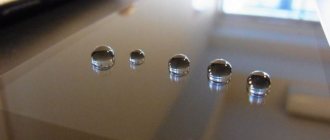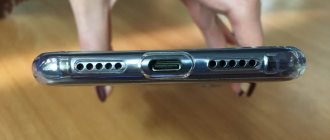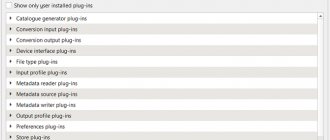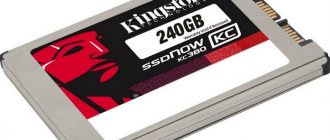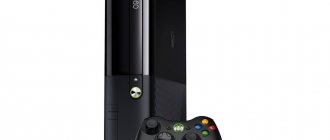You definitely paid attention to the line “oleophobic coating” in the technical characteristics of modern smartphones in online stores and in reviews on thematic websites. It is usually indicated as a separate item by manufacturers of protective glasses, even on AliExpress.
Subscribe to our Telegram
Subscribe to our Telegram
For the first time, the need for an oleophobic coating was discussed at Apple. This is not surprising, since it was she who was the first to introduce a device whose capacitive screen had to be touched with your fingers, and who launched the general transition from resistive displays.
Today, almost every modern smartphone has an oleophobic coating. We know that it protects the screen from fingerprints, greasy marks and other dirt. It’s just a pity that over time it becomes unusable... But why does this happen? This article is about this and more.
How did the oleophobic coating appear and why is it needed?
The iPhone 3GS was one of the first to receive an oleophobic coating. Source: nextpowerup.com
German scientists developed an oleophobic coating in 2005. This was made possible thanks to the interest of Apple. The company was then looking for new solutions that would protect the displays of their phones from hand marks and dirt - this would allow the new iPhones to look more advantageous.
It was Apple that first began to use oleophobic coating in its smartphones, then it was the iPhone 3GS model. Over time, other manufacturers picked up the innovation. Already at this time it became obvious that this development would be used everywhere in the near future.
The concept of oleophobic coating comes from a couple of words: the Latin “oleum” - “oil”, and the Greek “φόβος” - “fear” or “fear”. They describe the properties of this invention in the best possible way. Essentially, this is a layer that is designed for those who are afraid of greasy stains.
Oleophobic coating is a nanometer film on the screen of your device that repels dirt. It consists of silicone, alkylsilane and solvent, and nothing more is known about its composition. The creators keep the exact formula a big secret, and they have not yet been able to solve it.
This coating is applied using silica, usually using a spray gun. It is thanks to this technology that you can leave fingerprints on your phone, and then simply wipe it on your jeans, and the screen will be almost like new.
Display protection
There are many interpretations of the concept, but the closest to reality is the translation from Latin:
- Oleum – oil;
- Phobos – fear, apprehension.
If you combine the two words, a picture will begin to form in your head - the oleophobic coating repels dirt, fats, sweat and other unpleasant components. After all, when using a smartphone, our hands are not always clean, and in the hot season, sweating is also added. And some people like to eat and then move their fingers across the screen (without wiping them first).
As a result, when you own a budget mobile device, spots and smears quickly appear on the display. They not only spoil the visual impression of the appearance of the gadget, but also interfere with viewing. It is enough to use a special cleaning cloth, but it is not always available.
Almost all modern mid-range and premium phones are equipped with an additional oleophobic layer located on top of the glass. This does not mean that you will be 100% protected, just that there will be significantly fewer traces and they will not be so noticeable. And it’s possible to eliminate them with one movement - you can use a sleeve, a T-shirt, etc.
Does the oleophobic coating actually wear off gradually?
As the oleophobic coating wears off, more and more fingerprints collect on the screen. Source: androidpolice.com
Yes, it’s a shame, but the oleophobic coating does not last forever. After some time, this thin layer begins to wear off, but how quickly this happens depends on the conditions of use of the device. The more actively you move your fingers over it, the faster you will get rid of this wonderful protection.
On the first models of smartphones with the new coating, the wear of the protective layer was noticeable after just a couple of months - especially in those areas of the display where the user most often swiped his finger. For example, where the unlock slider was located on the screen.
In addition, those places that came into contact with the covers and seams of the jeans were at risk. Modern manufacturers of such coating claim that now it can not deteriorate at all for up to six months. But after this period it will still begin to gradually wear off from the surface.
Most of all, such a coating deteriorates precisely because of friction. The thin layer, which becomes unusable over time even from ordinary pressure, is destroyed much faster with frequent contact with clothing and rough fabrics. This is why carrying a smartphone in your jeans pocket is not the best idea.
By the way, solvents and products with a high alcohol content are also harmful to the oleophobic coating. This is why you should not wipe the screen with alcohol wipes if it suddenly gets dirty. In such cases, it is better to use a soft microfiber cloth, which is usually used to clean glasses.
Operating principle
The term "oleophobic" can be deciphered as "protecting against oil" (from the Greek words oleum and fobos).
In this case, it refers to a thin nanometer film deposited on the glass surface using vapor deposition. The coating consists of the following components:
- 0.1–10% alkylsilane;
- 0.1–10% silicone;
- not less than 80% solvent.
The technology according to which the coating is carried out was created by three German inventors who received a patent in 2005.
It was later improved by Apple specialists and used to protect iPhones and iPads.
After some time, other companies began to apply the coating to the front panels of their smartphones.
Rice. 2. Coated glass before installation on the smartphone.
How to check the condition of the oleophobic coating on the screen
Pay attention to the drops that do not spread. Source: nanoslic.com
It should be remembered that the oleophobic coating is not able to protect your touch screen from scratches, cracks and damage. But some manufacturers insist it also protects against sun glare, improving readability in bright sunlight.
Today, oleophobic coating is used on most smartphones, smartwatches and tablets. It is usually found even on not the most expensive protective glasses. You have the opportunity to independently verify the presence or absence of a protective layer on the screen of your device.
This is not difficult to do. Take some water into a small pipette and drop it onto the test screen. After this, try tilting the gadget in different directions, moving the drop along the glass. If it leaves a wet trail behind it, it means your device does not have a protective coating.
Glass with an oleophobic coating will make water curl into a neat drop that will roll across the screen in any direction. But be careful with it so that it does not get into the speaker or other technical openings - this especially applies to devices without moisture protection.
In addition, water-based markers can be used for checking. A good oleophobic coating will turn the marker trace into small droplets, pushing away the applied layer. We don't recommend this option, but you can do it for research purposes if you have some old device lying around.
How does it work
The applied oleophobic liquid, after drying, forms a thin protective layer of 2-3 or more nanometers. The thicker the layer, the higher the efficiency and service life of such a coating. When drops of water, oil or other liquid come into contact with the olephobic coating, they accumulate and are easily removed. More often, to remove moisture, it is enough to tilt the treated surface so that the liquid rolls to the side.
The hydrophobic coating also reduces the formation of dirty and sweaty fingerprints. Touch marks and stains are less distinct, and a few movements of a dry cloth are enough to remove. In addition, the formed film facilitates the sliding of the finger, which is important for devices with a touch screen.
What do safety glasses do with an oleophobic coating?
The protective glass sticker is detrimental to the screen. Source: joomania.info
If you have been using a smartphone or other device with an oleophobic coating on the screen for more than a year, you don’t have to worry about it at all. Most likely, you erased it a long time ago, and the tests that we described above will be a clear confirmation of this.
But everything changes when it comes to a new device. Firstly, when gluing the protective glass, the screen must be completely degreased, and for this, alcohol-containing solutions are usually used. Secondly, being on the screen, it will mechanically damage the coating.
It turns out, on the one hand, the protective glass should prevent damage to the screen, on the other hand, it itself destroys it to some extent. Yes, this will not be noticeable immediately, but after several such manipulations its harm will already be more than obvious.
It's up to you to decide whether to glue the protective glass or not, but you should keep this unpleasant fact in mind. By the way, the situation is similar with films and other protection that is adjacent to the screen. The same applies to waterproof cases with a transparent front panel.
Personally, I am in favor of safety glass. My iPhone XS Max has had this since the moment of purchase in the fall of 2022. I did the same with the Xiaomi Mi 9, which I just purchased to get to know the world of Android better after a long friendship with Apple.
Is it worth gluing a protective film onto the “native” oleophobic coating?
Protective film for your phone
There are both “pros” and “cons”.
On the one hand, gluing films will allow you to “renew” the oleophobic coating, on the other hand, due to contact with the adhesive base of the protection, the “native” coating will begin to wear off.
Depending on the quality of the film or protective glass, 3-4 applications of such additional protection can completely destroy the factory oleophobic layer of your device.
Is it possible to restore the oleophobic coating on the screen?
This liquid promises to restore the oleophobic coating. Source: amazon.ae
If you google this question, the Internet will bring up a lot of interesting things - from liquids from AliExpress to homemade recipes using polishes, and the results of using such methods are different for everyone. For some, the effect lasts for a couple of months, for others for a couple of days.
The great Chinese market offers hundreds of incomprehensible sprays that supposedly imitate an oleophobic coating and are applied by simple spraying, but it is impossible to obtain information about the composition of these mixtures. Honestly, it’s better not to take risks with such “restorers”.
We do not recommend using such products, since no one, including the seller himself, can guarantee that such coverage will be safe for you and your device. There have been cases when low-quality spray led to burns and allergies among users and damage to the screens of their smartphones.
I have tried similar sprays myself. A couple of years ago I ordered a few to try from AliExpress, and one of them actually created a kind of oleophobic coating on the screen of my Apple Watch. Interestingly, the effect lasted about a month or even more.
However, I deliberately tested the effect of the miracle substance on my watch, which is time to retire. Plus, the result was only from one spray out of several, and the rest resembled liquid for refilling vaping systems - most likely, they contained glycerin.
How to apply a protective layer yourself
The question often arises whether it is possible to apply an oleophobic coating yourself, whether it can be restored with your own hands. The procedure at a service center can be quite expensive, and not everyone can afford it. Those who cannot afford restoration and who do not mind the phone can restore the oleophobic coating with their own hands. The smartphone can be any model, condition, age and presence of previous coatings does not matter.
First of all, you need to purchase the “Fusso SmartPhone” kit in the online store, after which you can start applying. Procedure steps:
- we clean the screen - use the microfiber cloth from the kit to wipe the display, erase all stains, trying not to leave marks;
- apply an oleophobic coating liquid to the phone display;
- rub evenly over the entire surface of the screen (since the liquid dries quickly, it is more convenient to divide the display into 4-8 parts and rub sequentially into each area);
- apply the liquid in 2-3 layers, preferably every other day, this will ensure more reliable penetration of the solution into the structure;
- leave the phone for 6-8 hours without touching the display, during which time the layer will be absorbed into the screen.
Remedies for restoring “oleophobia” can be dangerous
It's a pity, but recovery fluids can even be dangerous for the skin. Source: lasexta.com
While preparing this material, I came across an interesting and very succinct review from a person who came across an incomprehensible liquid for restoring the oleophobic coating. I'm sure he regretted buying it more than once. I tried to translate it as close to the original as possible:
“I ordered this product because the oleophobic coating on my Samsung had completely disappeared over several years, and using the smartphone became inconvenient and unpleasant - it looked untidy, collected all the fingerprints, and it was simply impossible to see anything in the bright sun. When the spray arrived, I did everything according to the instructions that I found on forums on the Internet - I wiped the screen, sprayed it, polished it with a cloth, and left it for a while. The first thing that caught my attention was the unpleasant chemical smell of the spray itself, but I didn’t take it seriously. When I decided to test the updated screen, I was shocked - the liquid had eaten through it, cloudy stains appeared on it, and it seemed that the last remnants of the old oleophobic coating had disappeared. The service center said that the case was not covered by warranty and that I would replace the entire screen.”
I will not point out the site or the specific seller from whom I saw this comment. A similar situation could happen to anyone, and even in the same store, liquids for restoring the oleophobic coating can be very different.
The difference between coated glass and film
Among the features of protective glasses that distinguish them from films with oleophobic properties similar in purpose, it is worth noting:
- greater likelihood of saving equipment from falls and impacts;
- simplified installation on top of the display - glass is easier to stick than film, which often creates air bubbles when pasted;
- increased strength - if the glass is not removed on purpose or accidentally, for example, by putting it in a narrow pocket, the likelihood of damage is lower.
Glass has virtually no disadvantages compared to film - although it is a little thicker, which can be noticeable, for example, when using a book case.
In addition, glass protection is a little more expensive.
There will be a noticeable disadvantage of glass only if the user intends to protect a smartphone or tablet with a non-standard form factor - unlike film, it will not be possible to cut it to the required size.
What to do if the oleophobic coating has already worn off
If the coating has already worn off, it is best to stick a protective glass on the screen. Source: moshi.com
If your smartphone no longer has an oleophobic coating, don’t worry. Yes, the finger no longer glides over it so smoothly, it quickly collects fingerprints and looks so-so. But I assure you that I have been looking for a global solution to this problem. I recommend you just accept it.
But there is no need to be upset either. You just need to buy a high-quality protective glass with an oleophobic coating, stick it on the screen and enjoy the absence of fingerprints and greasy marks. It will also protect it from accidental scratches and save you if you drop the device on the floor.
For those who do not like to use additional coatings, there is always the option of replacing the entire display with a new one. Everyone views oleophobic coating very differently, so it's hard to say whether it makes common sense. But it’s definitely up to you to decide.
How to properly clean your display
It is also recommended to clean the protective glass periodically. It is better to do this with the phone turned off. To remove fingerprints, use microfiber or any soft, lint-free cloth.
It is recommended to remove traces with light movements from top to bottom; to enhance the effect, use special liquids. Circular movements will help get rid of difficult-to-remove marks, but you should avoid strong mechanical impacts that can lead to damage to the display.
When removing sticky stains, sweet water stains, etc. It is recommended to use a damp, thoroughly wrung-out cloth. It should not be too wet, as this may damage the display or damage the entire device. At the final stage, the display must be wiped with a dry cloth.
Purchasing protection
Unlike cases, which are often sold in the same online stores where you can buy smartphones themselves, you will have to look for glass on other resources.
The best options are resources such as Aliexpress and eBay.
Purchase and delivery will take more time, but the user will be able to save on protective glass and get exactly the protection that best suits his model.
Rice. 5. Coated glass on the Aliexpress website.
It is more difficult to find similar glass with such a coating in domestic services, and the cost will be higher. But the owner of models from LG, Samsung, Apple, HTC and a number of other well-known brands can do this without any problems. In this case, the purchase will be received within a few days, and not months, as with Aliexpress.
Process of gluing coated glass
Installing glass, despite the apparent complexity of this process, will cause the user less problems than sticking film.
Under the glass surface hides dust and bubbles that would remain visible under film protection.
Although it is best to first wipe a dusty screen with the included cloth.
The basic rules for installing a protective device are as follows:
1 glass is attached to the display so that its holes exactly match the corresponding connectors of the smartphone or tablet (sensors, microphone and camera);
2 if it was not possible to successfully apply the protection from the very beginning, you can peel it off and apply it again ;
3 when dust gets under the glass, it is usually smoothed out - large dust particles are removed with tape, carefully lifting the glass.
Rice. 6. The process of sticking glass on a smartphone.
Protective glasses are an ideal option for people who are not very careful with their phones. For example, gadgets are often dropped or cases are not used. This device is also suitable in cases where, for ease of use, the smartphone is protected only by a “bumper” on the back cover.
